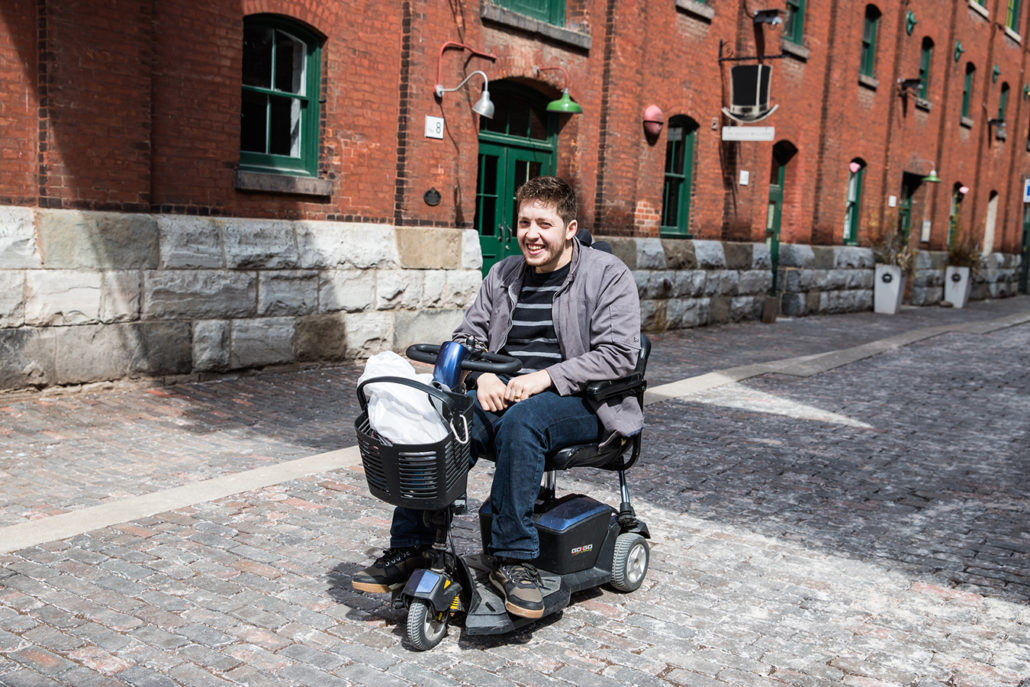
There’s a growing movement to break down barriers to participation in everyday life. Are you on board?
Last winter, with all the snow, ice, sleet and salt, I felt like I had to go into an involuntary hibernation of sorts. As a man with cerebral palsy who walks with forearm crutches and drives a mobility scooter for longer distances, I have a rule: No leaving my condo when it’s actively snowing. It’s too big a risk. One minute I could be motoring along in light flurries and the next I could be trapped on a snow bank at risk of becoming a human popsicle. For me and other people with disabilities, when sidewalks and crossings are not cleared in a timely fashion, it’s not just an annoyance. It’s an impediment to going about our lives.
Winter puts into sharp relief just how vulnerable you really are as a person with a physical disability, and just how tenuous the line between life and death can be, in comparison to a non-disabled person. While people without disabilities have many options for getting themselves safely to shelter during a snowstorm (their feet, their car and literally any bus or subway stop along the way), I have to hope the very thing that gives me independence doesn’t suddenly die in the street, leaving me having to ask passers-by to push me along the sidewalk or to pray I’m within a few feet of an accessible subway stop. Otherwise, I’d better hope my phone didn’t die in the cold, so I can call an accessible Uber or cab.
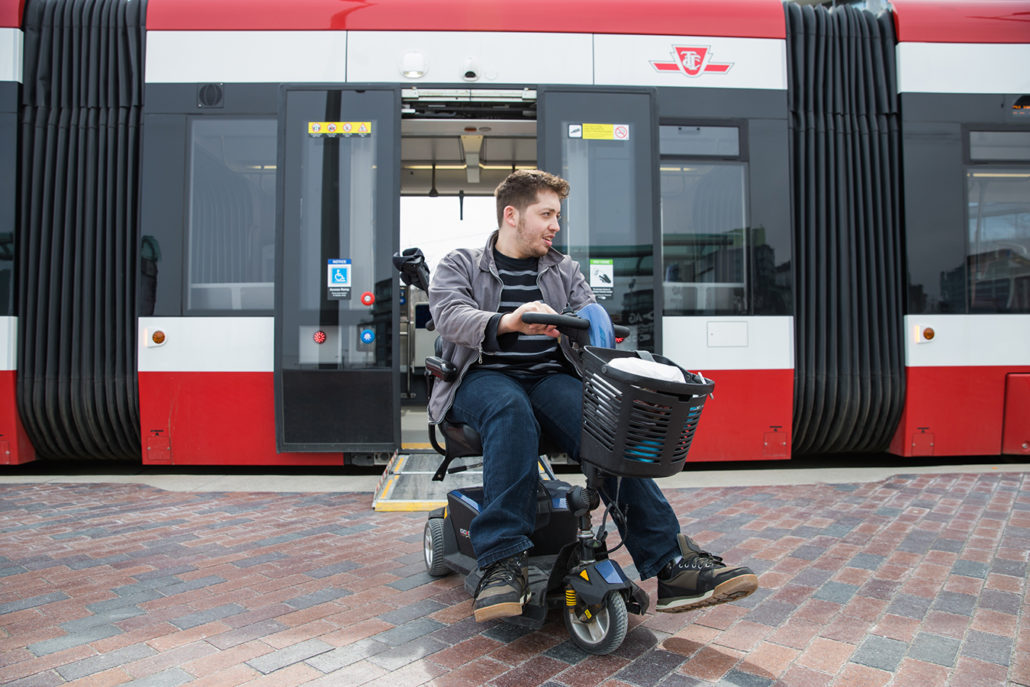
And accessibility is a far bigger challenge than just getting outdoors independently in harsh weather. It’s a year-round issue that includes coming up against barriers to employment, barriers to resources, barriers to income and barriers to healthcare. Only a few things have to go wrong in life before homelessness or illness become real possibilities and, suddenly, that job interview or doctor’s appointment you couldn’t access — because there was no ramp, the elevator was broken, your Wheel-Trans was over an hour late, or the person you were dealing with had internalized prejudices about your capabilities — become a huge deal in retrospect.
A much older and wiser friend of mine always says, “We are but one moment’s experience away from disability,” and he is right. It can happen to anyone, even if they’re not born with any physical challenges, either as the result of an accident, developing a new medical condition or simply aging. Disability may be temporary, say if you injure your ankle or your back from a fall, and often that’s when previously non-disabled people have their lightbulb moment about how fundamentally important accessibility is in an inclusive society. Mobility challenges — temporary or permanent — should not be a barrier to participating fully in life.
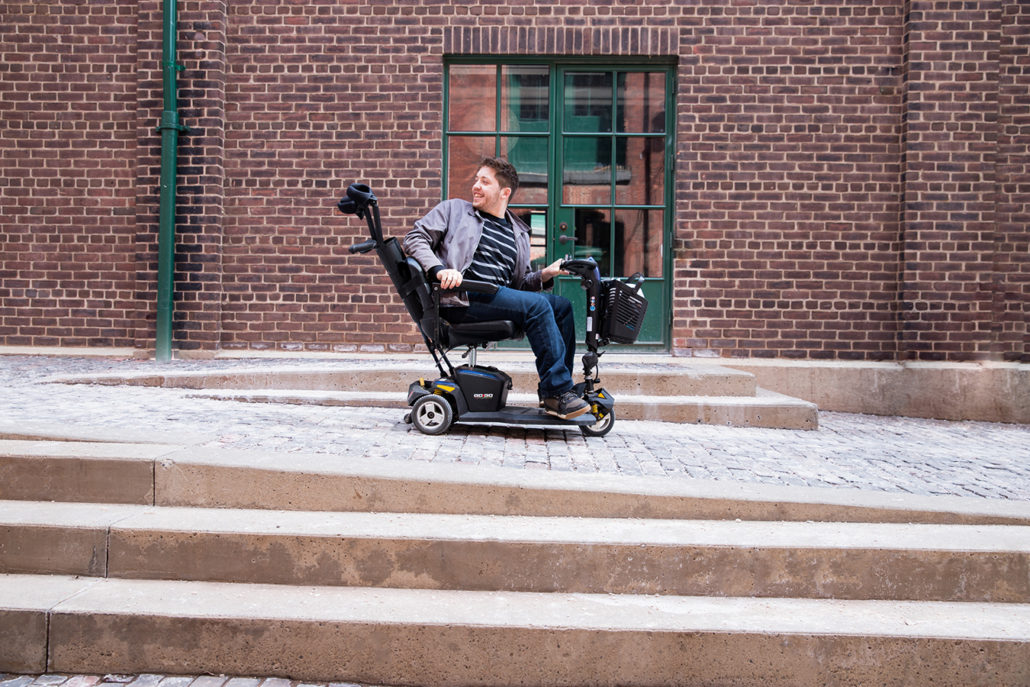
We have made progress towards full accessibility in the GTA. Now when I take the subway, I can use half of the stations — those that are now wheelchair- and scooter-friendly — although it would be good if there were multiple elevators at transfer points on the subway lines such as St. George Station, because when there’s just one, it’s a huge hassle when it breaks down. I can get onto the low-floor streetcars that have no steps and priority seating by the doors. I can shop in more and more of the stores that I want to go to, now that temporary accessible entrances have become more common. And I recently heard that the world’s first fully accessible condominium has been announced in Pickering, so hopefully that’s the start of a new trend.
Apps like Toronto-based Access Now make it possible for me to assess the accessibility of over 9,000 businesses or restaurants worldwide, including whether their washrooms are accessible or located down a flight of stairs, thanks to reviews from other users with disabilities. But there’s still a long way to go before I can navigate the city and all it has to offer as freely as my non-disabled friends can. Campsites, nature paths, beaches and playgrounds are still examples of places with fewer accessible options, even though the resources to make them more accessible are out there. For example, it’s possible in Ontario to find playgrounds with accessible equipment and activities kids using wheelchairs can partake in — but there’s only one accessible playground per city across the province. Beaches can be made accessible with public beach wheelchairs with inflated wheels, wheelchairs that can be used in the water and non-slip beach mats that make it possible to roll across the sand in a wheelchair or walk more easily with a walker — but only five beaches in Ontario have beach mats available, while only one or two have beach wheelchairs.
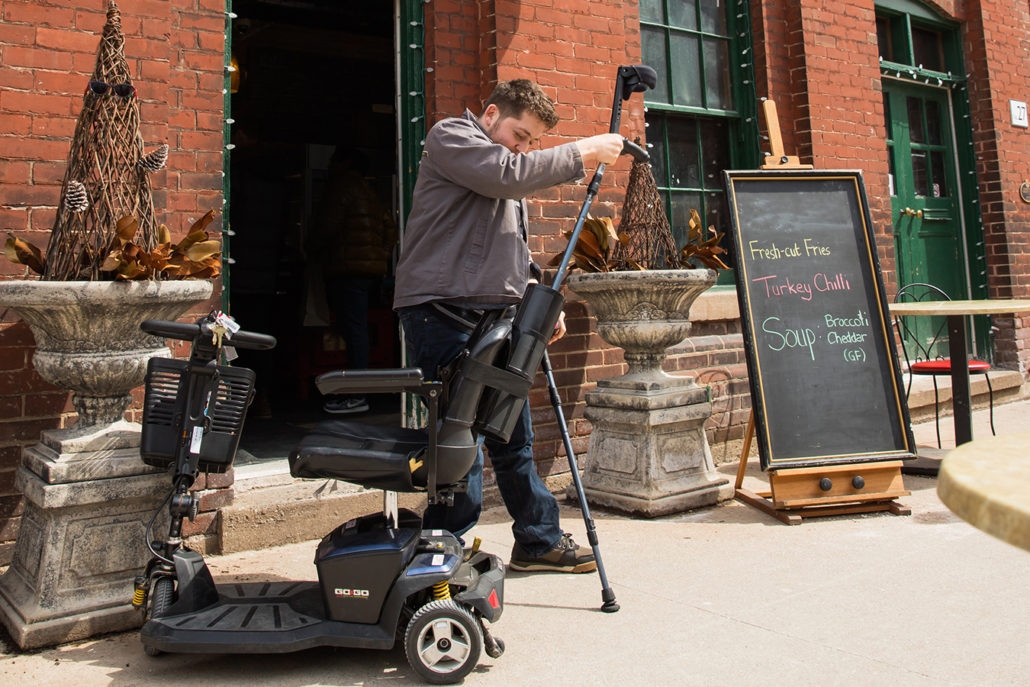
If you want to do your part as an individual, you can start with the basics. Shovel the sidewalk when it snows. If you see a person with a disability who looks like they need a hand, ask them if and how you can be of assistance. A simple, “Do you need a hand?” will suffice. If you see a person with a disability fall, don’t jump in to lift them up right away. For me, for example, a fall happens often enough that I’m used to it and I always have a system for getting up on my own. Nothing usually gets hurt (except for my ego) and if someone tries to get physically involved to help, it usually makes it more difficult for me to get up — and more embarrassing. Plus, a fall usually looks worse than it actually is. If I do need help, I will let you know.
Also, make friends within the disability community — we will tell you what’s up. Many of us are vocal on social media, too. On Twitter, for instance, some great people to follow include:
• Maayan Ziv (@maayanziv), founder of the Access Now app;
• Jeff Preston (@jeffpreston), an advocate and professor of disability studies;
• Melissa Graham, (@mel_graham), founder of Toronto’s Disability Pride March; and
• Andrew Gurza (@andgurza), creator of the Disability After Dark Podcast about sex and disability.
And these organizations’ websites have great information on accessibility issues and how you can make a difference:
• Accessibility for Ontarians with Disabilities Alliance
• Toronto Disability Pride March
• The Rose Centre
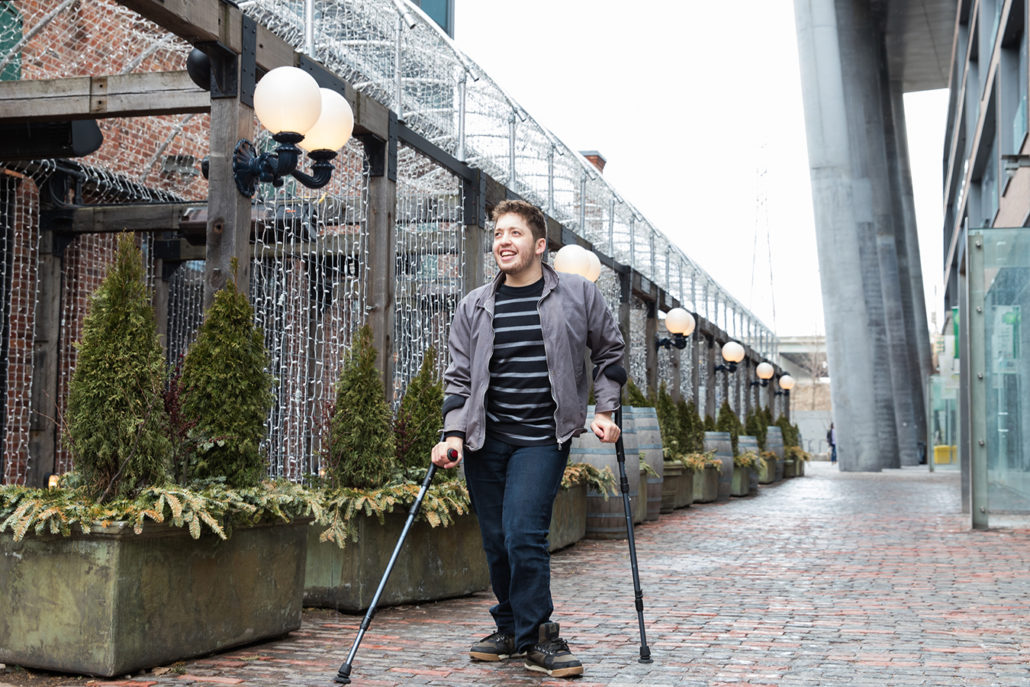
If you’re someone in charge of making a business, community building or neighbourhood more accessible, bring the disability community into the planning process. It’s amazing how many so-called accessible solutions remain inaccessible to some because an important aspect wasn’t thought of. Take the new Presto card, promoted as a convenient, touchless way to pay for public transit — convenient, that is, unless you can’t raise your arms to bring the card against the reader. The worst thing is, there is already a solution out there to this accessibility challenge: the hands-free access gate, which uses radio frequency identification technology to sense the approach of a traveller and automatically open and close. Proper consultation with people with a range of physical disabilities would have caught this flaw in the system.
A lot of the accessibility improvements you see today are thanks to the rabble-rousing, civil disobedience and legal challenges of disability activists who came before. We have David Lepofsky, a blind lawyer and disability activist, to thank for pushing the TTC to announce accessible subway, streetcar and bus stops after winning a 10-year-long Ontario Human Rights case — a change that benefits everyone. We have Luke Anderson, a structural engineer with quadriplegia, to thank for starting the StopGap Foundation and powering full-steam ahead equipping businesses, schools and community spaces with custom-made and colourful ramps across the GTA, in spite of resistance from bylaw enforcers. Let’s keep the momentum going together!
According to the social model of disability, which was developed by people with disabilities, what is disabling is not an individual’s diagnosis, but the lack of equality they face in political, social and built environments. Simply put, if the world were designed to be 100 percent accessible, disability would not be the barrier it is today. And I’d look forward to the last snow bank finally melting each year in the way that any GTA resident does — not because my participation in life depended on it.